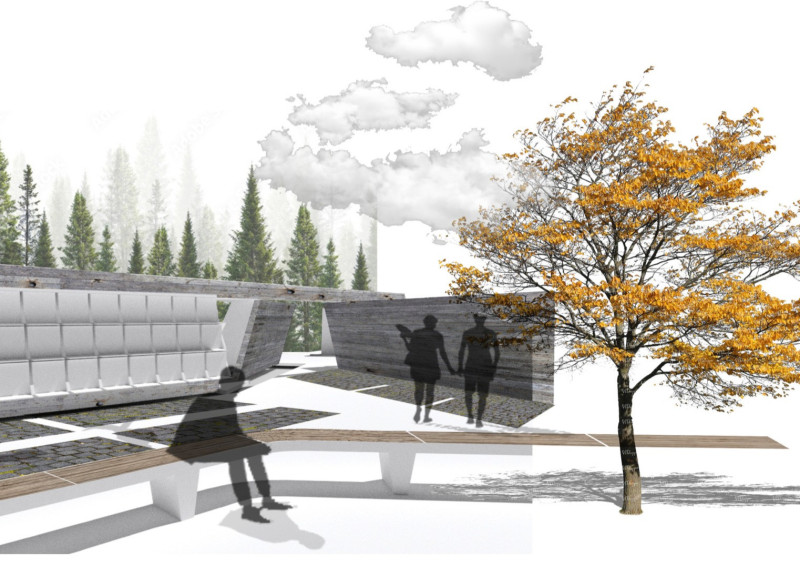5 key facts about this project
The Folds of Urban Memory explores the contributions of notable female Latvian citizens through thoughtful design and the theme of urban memory. Situated in Riga’s Forest Cemetery, the project reinterprets burial grounds, aiming to create spaces for reflection and remembrance. The Columbarium, referred to as "the Chambers of Memory," establishes a connection between these women and the cultural history embedded in the city.
Conceptual Framework
The design focuses on memory as an important aspect of the urban experience. By linking influential figures, such as physicist Lidija Liepiņa and theatre artist Elza Radziņa, to specific cultural sites around Riga, the project creates a seamless narrative. The strategic arrangement of urns along a designated pathway introduces a new way for visitors to engage with the landscape, reinforcing ties between the cemetery and the surrounding urban area.
Spatial Organization
The layout of the urns encourages interaction with both natural and constructed elements. The horizontal arrangement reflects the varied nature of Riga’s urban morphology. At the same time, the vertical presence of the nearby forest provides an additional layer to the experience, inviting visitors to consider the contrast between built forms and nature. This relationship enhances the journey through the space, allowing individuals to connect with the historical context as they move along the path.
Material Considerations
While the presentation does not specify particular materials, the design suggests a thoughtful approach to material use that complements the environment. This intentional ambiguity allows for flexibility in interpreting the physical aspects of the project. Rather than focusing solely on materials, the design invites attention to how these elements influence the overall experience of memory and legacy within the site.
Details within the Columbarium guide visitors through the space, emphasizing a sense of pilgrimage. This attention to detail echoes the stories of the women being honored, ensuring their memories are represented in a meaningful way. The design serves both as a tribute and an exploration of how cities can reflect their histories through engaging and contemplative environments.




















































